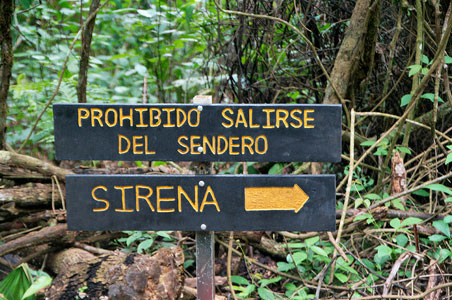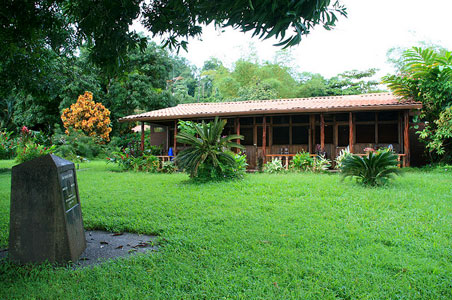
Thunder quaked, and with every step, I slid down the slippery jungle path nearing the edge of the canopy as rain poured through the trees. Howler monkeys groaned in the distance. One of my travel partners brought out a dry bag and enclosed his camera gear in of it. “I never travel without one of these,” he said. Wise, especially in Costa Rica‘s Corcovado National Park.
Fickle weather conditions in Costa Rica show no mercy to hikers, especially those who scrimp on accommodation and charter planes and rely instead on tents and their own two feet. The budget traveler’s best investment: a rain jacket and a strong will.
When to Go
Costa Rica has two seasons: the dry season (November through April) and the green season (May through mid-November). In August, I found the day to be divided in half: morning sun and heat with afternoon and evening storms. So, during greener months, schedule activities earlier in the day and keep your fingers crossed during the afternoon.
The rainiest months offer discounts on activities and accommodation. Many places, however, close in October when conditions worsen, so be sure to call ahead before booking.
Insider Tip: Don’t want to spring for a dry bag? Ziploc, or other plastic bags are a must. They’ll keep your camera dry on the trail and also will hold mud-soaked shoes away from clean clothes in your suitcase.
Recommended Fodor’s Video

How to Get There
The journey to Corcovado National Park is part of the adventure.
Sansa Airlines has daily direct flights from San Jose to either Puerto Jimenez or Drake Bay on the Osa Peninsula, two of the Park’s main access points. Driving to either location is possible with a 4WD vehicle depending on the time of year. Roads can be perilous due to flooding and rain damage, so proceed with caution. Also, Drake Bay is not entirely accessible by car. You must first reach the town Sierpe then take a boat the rest of the way there. Tracopa bus line is another option for frugal travelers (it’s around $9 roundtrip).
Once in the Osa Peninsula, you have options to reach the park depending on how rugged an adventure you seek. The easiest, most expensive option: fly. For around $300 each way, Alfa Romeo Air Charters will get you directly to Sirena Ranger Station in minutes.
You can also access Corcovado from Drake Bay by boat. Tours depart Drake Bay Wilderness Resort at 7:30 am headed to San Pedrillo Ranger Station. The ride is 20 minutes. The more intrepid adventurer can boat one and a half hours to the Sirena Ranger Station, which has longer, more advanced hikes. Alternatively, you can walk the coastal trail to San Pedrillo station, just make sure to check tidal maps beforehand. Some areas become inaccessible during high tide.
From Puerto Jimenez, the most accessible entrance points to the park include the towns Carate to the south and La Palma to the northwest. Each town can be accessed by bus, taxi, or car.
Insider Tip: To fly, you must pack lightly, officials weigh you and your baggage before embarkation. Check websites for restrictions.

Where to Stay
Accommodations in and around Corcovado Park depend upon your budget and tolerance.
Daring travelers can stay in the Sirena Ranger Station dorms for $8 a night or camp on the grounds for $4. Advanced reservations recommended. These accommodations are not, I repeat not, for the faint of heart. Colossal Golden Orb Spiders claim this territory, so remember to shake out your sleeping bag and boots, and the bathrooms are, well…
The Danta Corcovado Lodge, Drake Bay Wilderness Resort, and Finca Exotica are a major step up while still reasonably priced, or at least within range of what you would expect to pay for a hotel. These accommodations are also scenically immersed in the jungle.
For a price, expect to be pampered at either Luna Lodge (Carate) or La Paloma Lodge (Drake Bay; considerably more pricey). Each place has its own list of activities like yoga, spa treatments, or day trips to Caño Island.
Insider Tip: Some lodges rent rain boots, useful for muddy trails.
Photo credits: Corcovado Park via Shutterstock; Sirena station courtesy of Flickr/Christian Haugen; Drake Bay Wilderness Resort courtesy of Flickr/Kradlum


